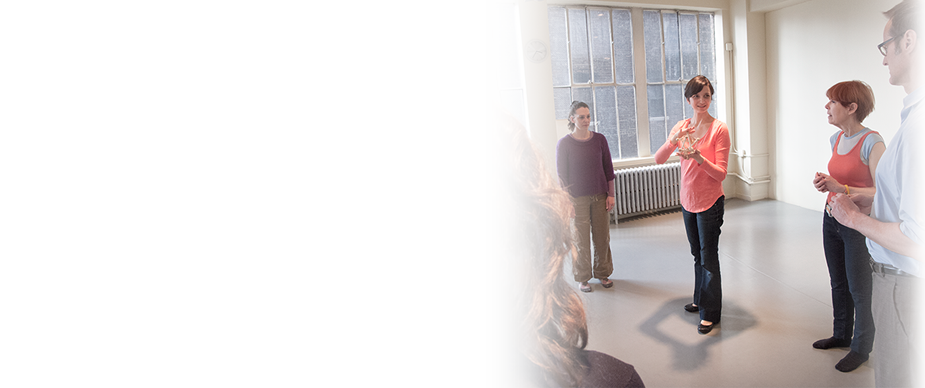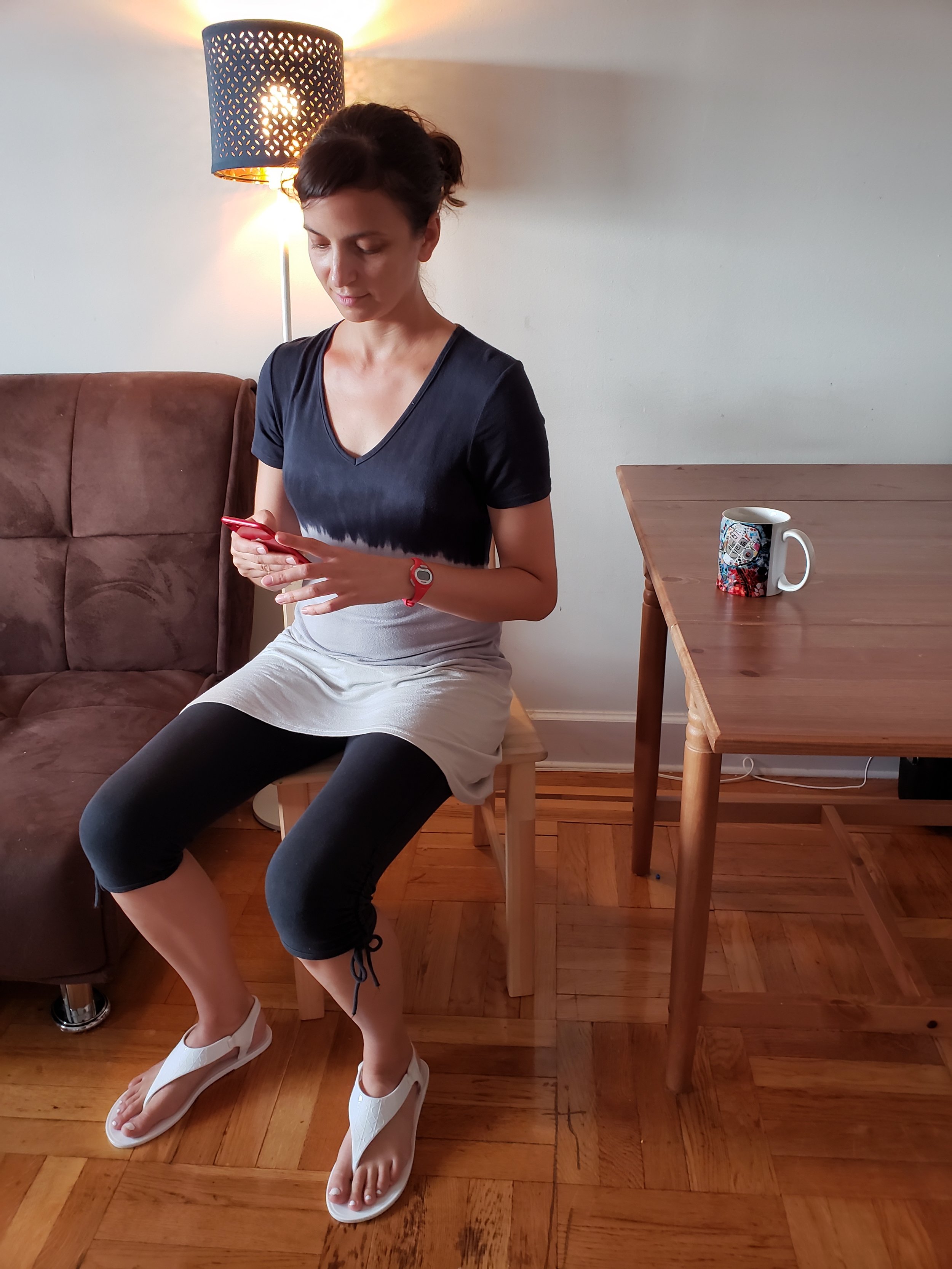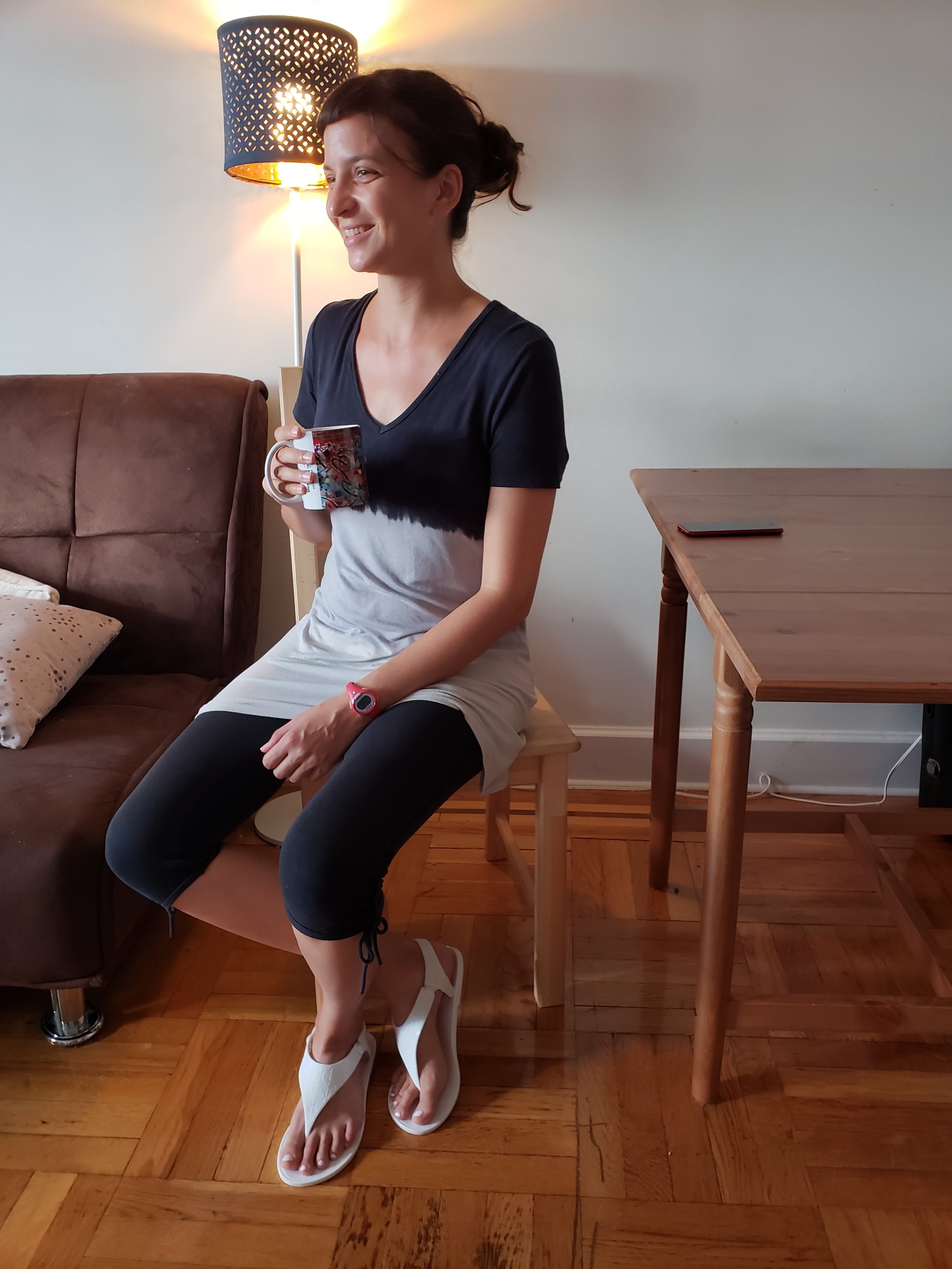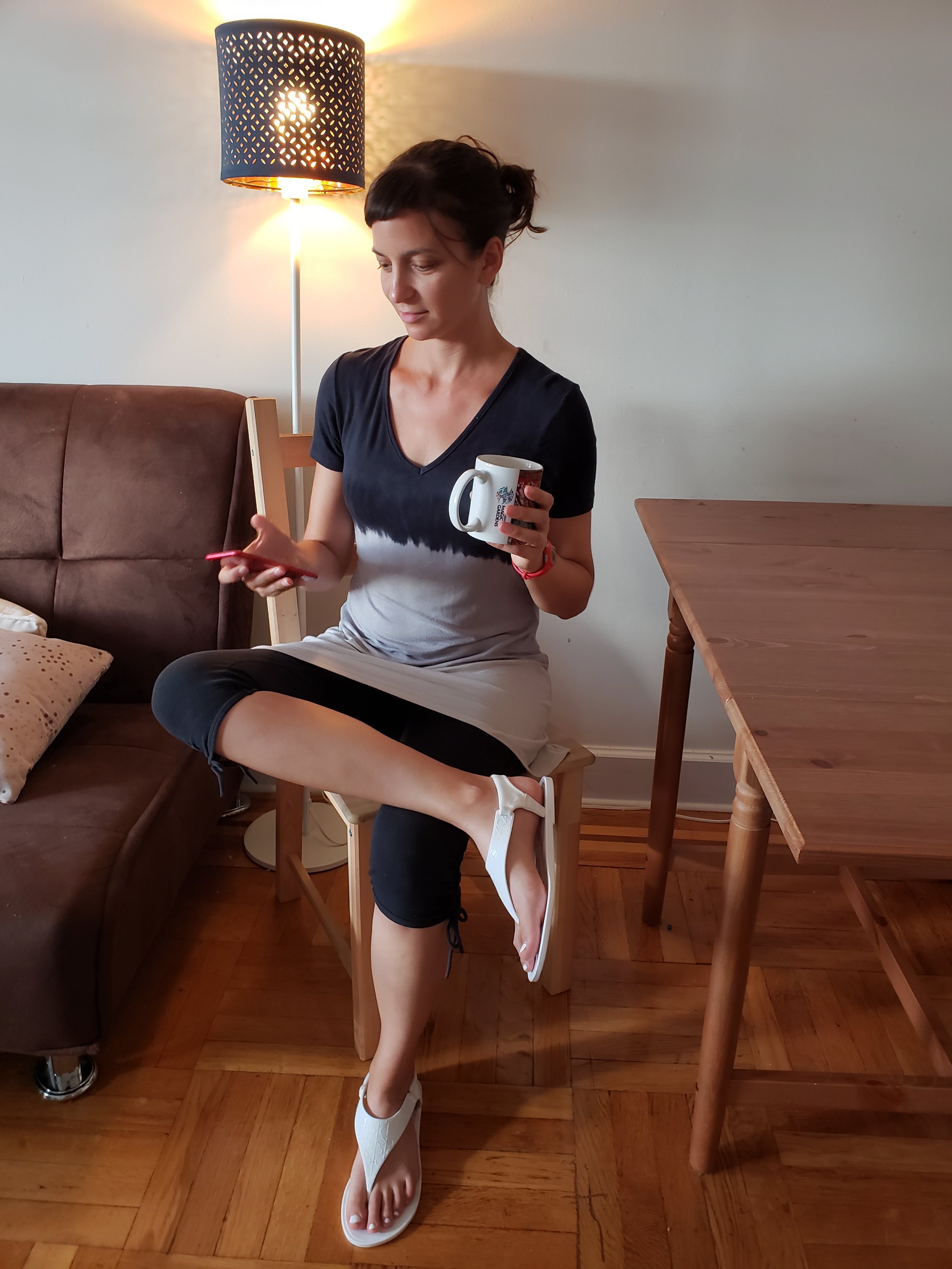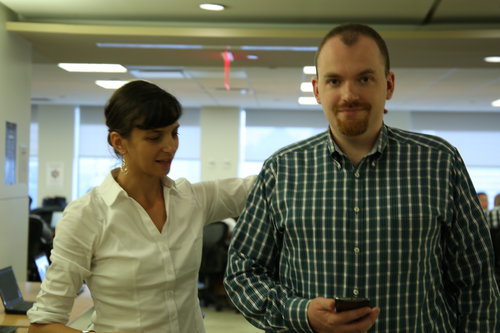New Year's Guide to Sitting - Day 3 - Cafes and Restaurants
/To kick off the new year, I’m sending out a daily email this week, focusing each day on a different type of chair or way we sit. At the end of the week, I will launch my long-requested audio guide for sitting!
How we sit is more important than what we sit on, but...if your seating is working against you, you’ll be on a uphill battle to sitting better.
Each day this week I’ll talk about a form of seating, some common issues with each one, and suggest simple solutions to help with the most common problems.
Day 3 - Cafe and Restaurant Seating
This topic is something of a wild card as you may not have much say in the matter...although I admit sometimes I will gravitate to a particular cafe if I'm going to sit and work because I like the chairs there!
Then there's also the issue of when you're actually eating at a restaurant and trying to have a conversation...especially if it's loud.
Cafe Chair Problems:
- Can't adjust height
- Back tilts too far
- Seat too hard, too soft, too deep
- Seat designed for lounging, not working
- It's a pain to carry around a bunch of accessories when you're out and about, especially if you live in a city and don't drive. You also might not want to show up to lunch toting a cushion.
- I'm sure you can come up with many more!
Solutions:
Don't carry around a bunch of accessories. Be creative with a coat, scarf, or sweatshirt to make your chair "just right". Seat's to hard? Sit on it. Too deep? Roll it up and place it behind your back. See the green scarf behind my back in my cafe selfie above? Filling in that space makes a big difference. Depending on the size/shape of your bag or backpack, you could also place that behind you for more support while you reduce the depth of the seat.
Chair too soft? This one's a bit trickier, but you might find that turning your coat or a sweatshirt into a cushion turns a softer seat into a firmer one as well.
Is the seat just too loungy? Then just lounge. If you're working on a laptop, lean back and put the laptop on your lap. No use fighting to sit up tall on a lounge chair. Leaning back is fine. Just make sure you're all the way back in the chair and not sliding down. Ideally your feet will still be on the floor.
A laptop stand can raise your screen up if you can't adjust the height of the chair, and they can be very portable like this one, for example. Don't make it too high or else you'll be reaching to type. You can bring a wireless keyboard with you and put it on your lap to get more of a desk away from the office effect...if you don't mind carrying one more thing with you. There are light-weight keyboards that fold up like this one.
And for when you're out socializing (and when you're working as well), do your best to keep your feet flat on the floor. When we're conversing, especially in a loud place, we tend to want to lean in. This can lead to slouching down into your soup, especially if the seating isn't very supportive. Keeping your feet planted will help you stay balanced! Also, do more hinging at the hips to move forward rather than just pushing your face forward. This applies to chatting and eating the soup!
Tomorrow's topic is the infamous yoga ball and other back-less seating. Should you be able to sit without a back? Yes and no! Stay tuned...
And check out what further topics to expect this week:
No back - stools and the yoga ball
The couch
Seating in planes, trains and automobiles
The floor
